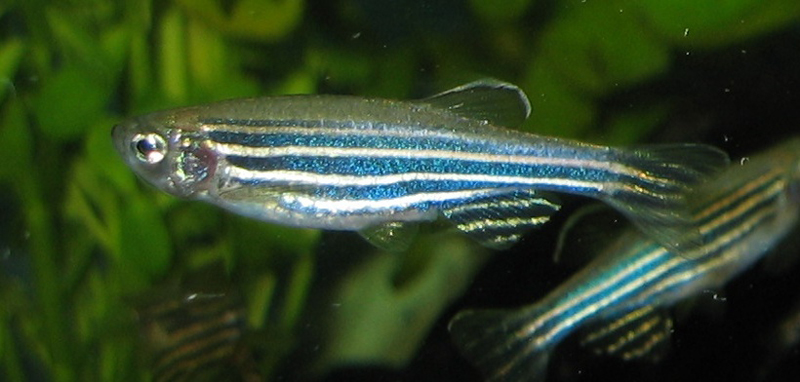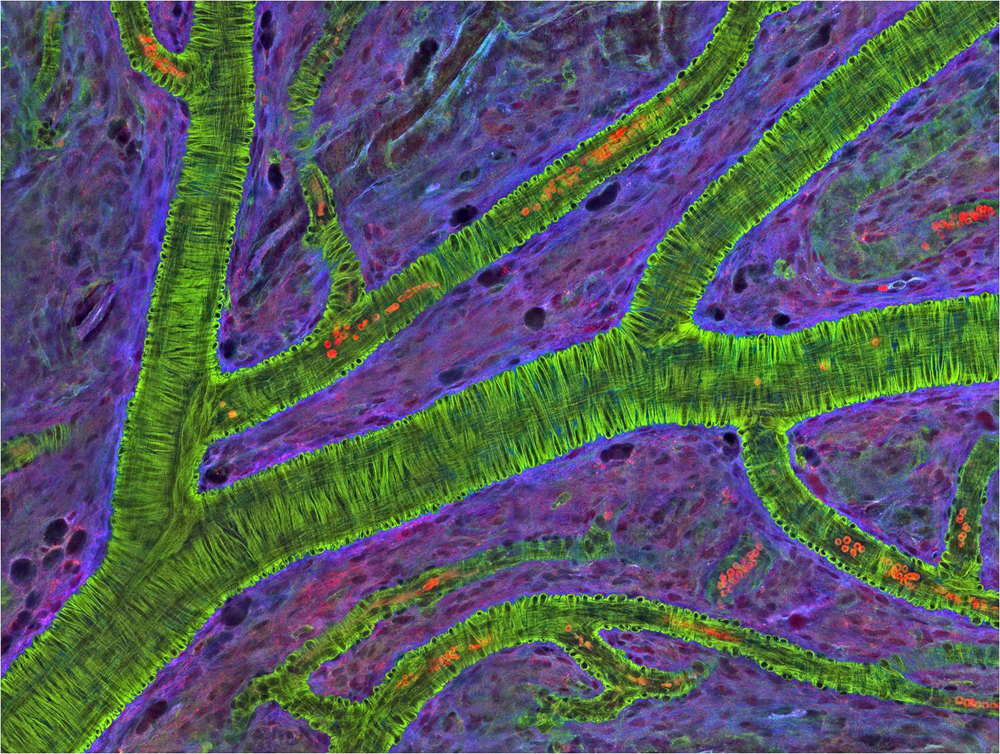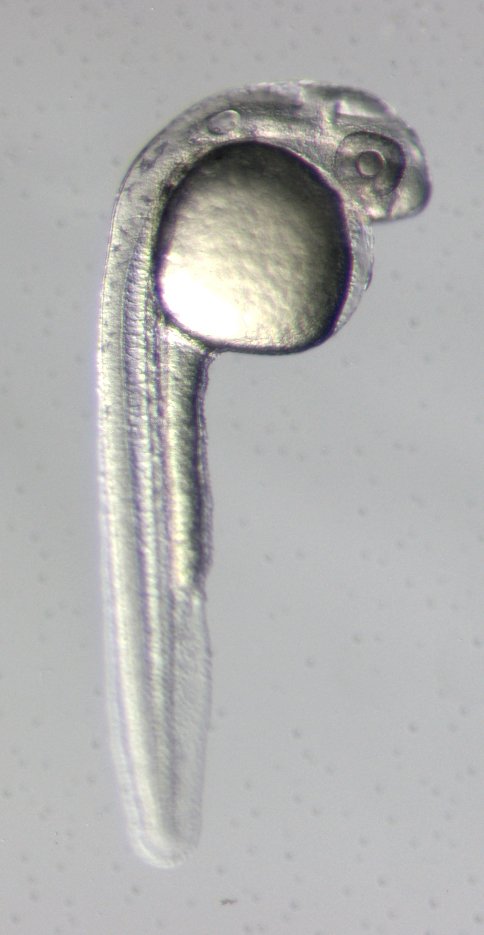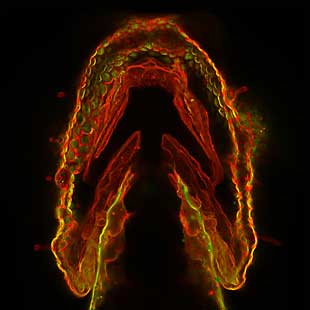Fishing for Complements: Zebrafish as a Model Organism

Zebrafish are earning their stripes as a model organism, giving scientists funded by the National Institutes of Health the opportunity to watch biological processes in action and apply their findings to human health.
How Blood Vessels Form
Vertebrates have closed circulatory systems that help blood — and the oxygen it carries — be delivered to organs and tissues. By studying the molecular players behind blood vessel growth in zebrafish embryos, scientists at the Scripps Research Institute have honed in on how the systems form.
The researchers focused on mutants of SerRS, an enzyme that usually helps translate DNA into proteins and plays an essential role in vascular development. The scientists found that the SerRS mutants often deleted or hid portions of themselves, rendering them ineffective. They were able to design another mutation that released the hidden part, allowing SerRS to move to the nucleus and facilitate normal blood vessel development.
The findings shed light on the role of SerRS in the development of closed circulatory systems — both in growing embryos and in evolutionary history.
How Mysterious Molecules Help Mold Brains and Heads
Zebrafish are also offering insight into little-understood types of RNA and their role in brain development.
Get the world’s most fascinating discoveries delivered straight to your inbox.
Only a small portion of RNAs carry out the instructions for making proteins. Researchers are learning that other RNAs have important jobs, too. One type, long intervening noncoding RNAs (lincRNAs), is involved in gene regulation. Little is known about how these RNAs function.
Focusing on two lincRNAs from zebrafish that have parallels in humans, researchers at the Whitehead Institute for Biomedical Research have finally begun to shed light on these RNAs. When they disrupted the RNAs’ function in zebrafish embryos, the scientists observed visible effects on the animals’ brain and head development. Inserting normal versions from human cells restored normal growth. This finding suggests that the human lincRNAs may have the same function, and it opens the door to studying other lincRNAs.
How Sugars Shape Embryonic Growth
Scientists have learned that glycans — or sugar molecules on the surface of cells — play key roles in a variety of important reactions in the body, especially during embryonic development. However, researchers’ knowledge of glycan activity has been limited by the fact that they’re difficult to view in action, even in a transparent zebrafish embryo.
One issue is that click chemistry — a widely used technique that allows researchers to label and image molecules by attaching florescent molecules to them as tags — employs copper, which can be toxic to live cells and restricts click chemistry to test-tube experiments.
Researchers at the Lawrence Berkeley National Laboratory have modified the original technique to make click chemistry possible in living organisms, with zebrafish being the first. They have developed a slower, copper-free version as well as a copper-based one that uses a ligand to mask the metal’s toxicity but not its ability to speed up the click chemistry reaction.
Being able to tag glycans in zebrafish embryos allows researchers to gain insight into the important roles the sugar molecules play in early development.
How Wounds Heal and Tumors Grow
Zebrafish remain see-through and stripe-less for the first few weeks after hatching, so their larval forms are also useful in research. For instance, University of Wisconsin-Madison researchers have used the larvae to observe the immune response, particularly when white blood cells are drawn to the site of an injury or infection.
Wounds and tumors generate high levels of hydrogen peroxide, which signal certain types of white blood cells to travel to the area and trigger inflammation. While this response can be helpful for infections, it can sometimes prolong wound healing and make tumors grow more.
To better understand these outcomes, the scientists monitored white blood cells called neutrophils as they moved toward wounds in zebrafish tails. They determined that the release of hydrogen peroxide modified a protein called Lyn, which then guided neutrophils down a specific path to the wound. By blocking Lyn, they might be able to control immune cells so they go to the site of infection, not a wound or tumor.
Learn more:
Zebrafish: A Key to Understanding Human Development Video
Also in this series:







